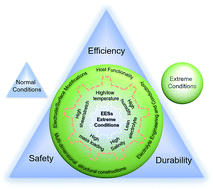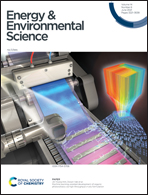Electrochemical energy storage devices working in extreme conditions
Abstract
The energy storage system (ESS) revolution has led to next-generation personal electronics, electric vehicles/hybrid electric vehicles, and stationary storage. With the rapid application of advanced ESSs, the uses of ESSs are becoming broader, not only in normal conditions, but also under extreme conditions (high/low-temperatures, high stretching/compression conditions, etc.), bringing new challenges in the energy storage field. To break the electrochemical constraints of ESSs under normal conditions, it is urgent to explore new approaches/concepts to address the critical challenges for ESSs working under extreme conditions via mechanistic understanding of new electrochemical reactions and phenomena in diverse scenarios. In this review, we first summarize the key scientific points (such as electrochemical thermodynamics and kinetics, and mechanical design) for electrochemical ESSs under extreme conditions, along with the scientific directions to maintain satisfactory performance. Then, we have covered the main obstacles to the utilization of existing ESSs under extreme conditions, and summarized the corresponding solutions to overcome them, as well as effective strategies to improve their electrochemical performance. Finally, we highlight existing critical barriers and the corresponding strategies needed for advancing ESSs under extreme conditions.

- This article is part of the themed collection: Energy and Environmental Science Recent Review Articles


 Please wait while we load your content...
Please wait while we load your content...